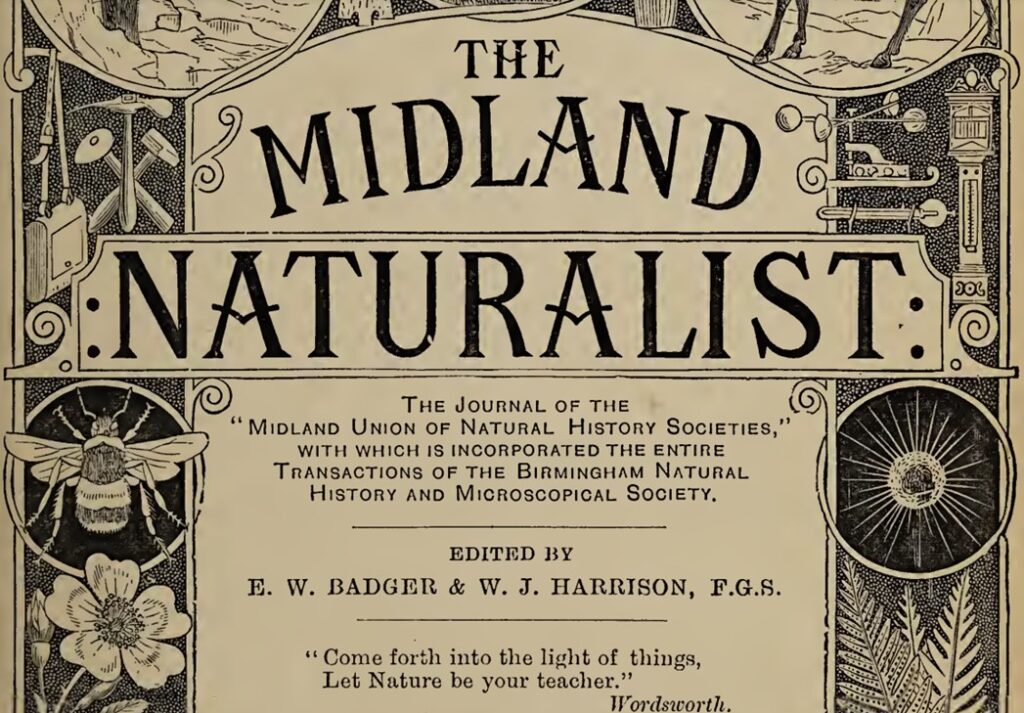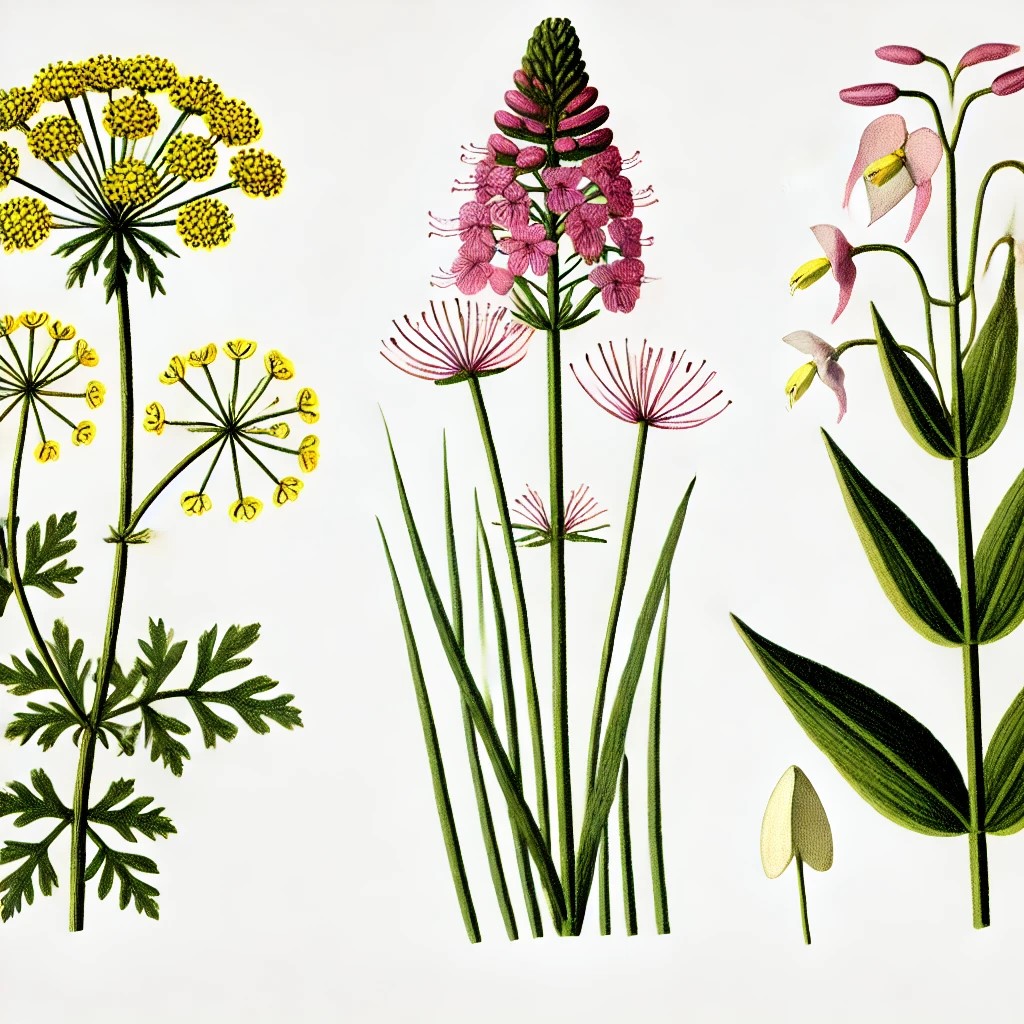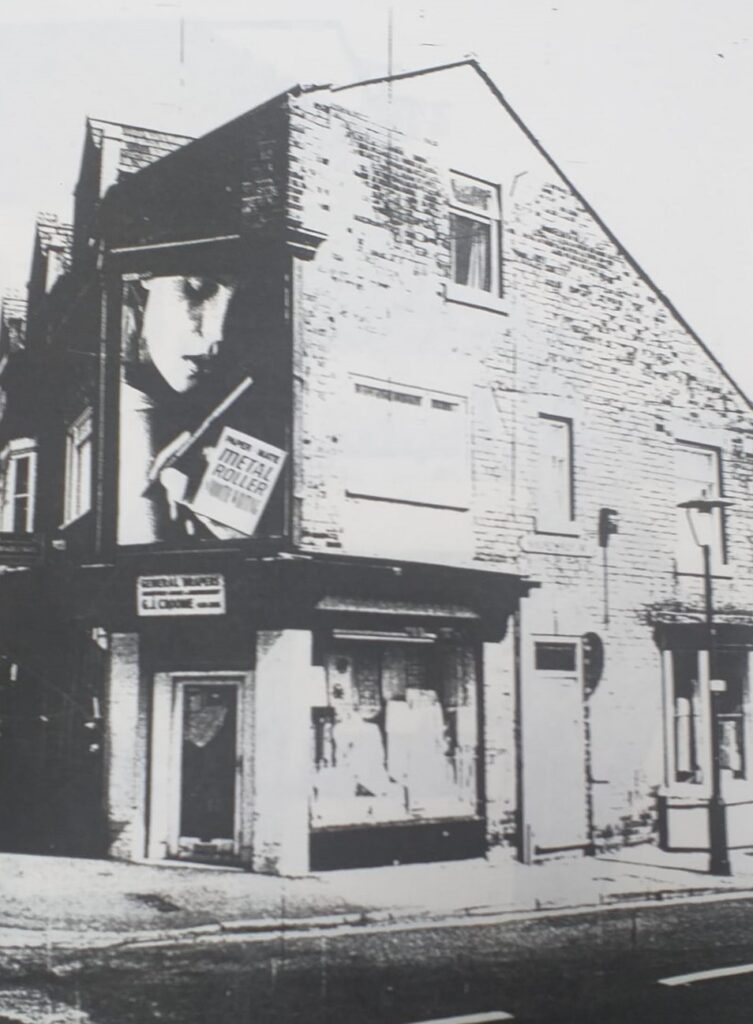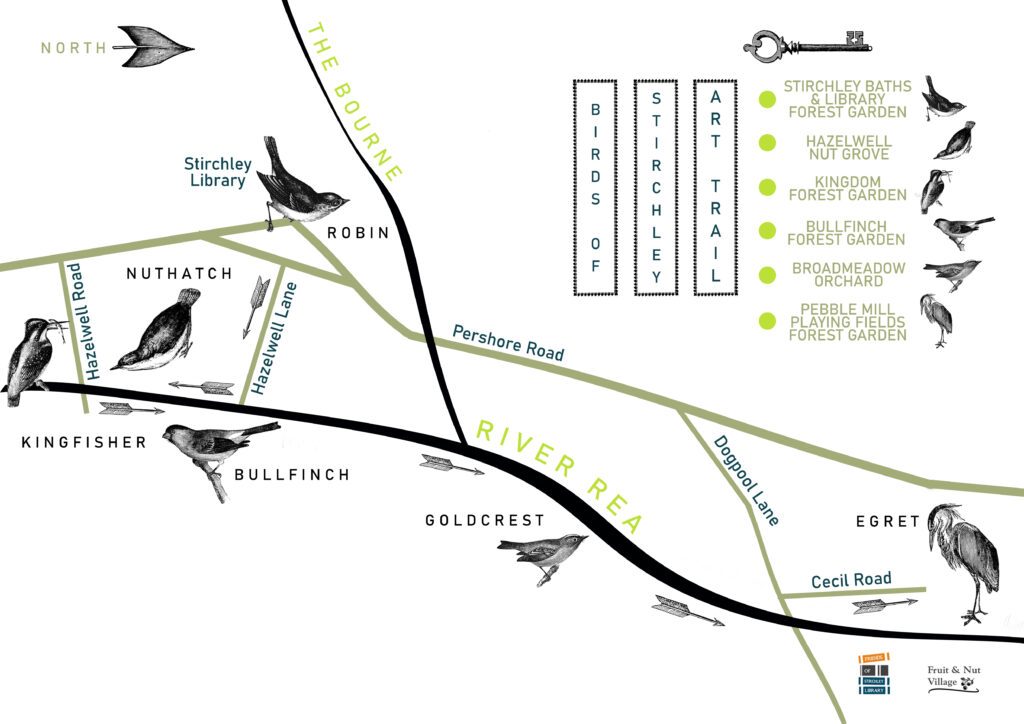
During Birmingham Heritage Week at the beginning of September, we organised a heritage walk along the River Rea. This followed six bird portraits by local artist Stephen Earl Rogers positioned in community gardens run by Fruit & Nut Village, and a talk on route about the history of the Rea in Stirchley by Jen Dixon.
This guide provides an outline of the walk so you can go hunting for the six birds yourself, with the aid of the map (above).
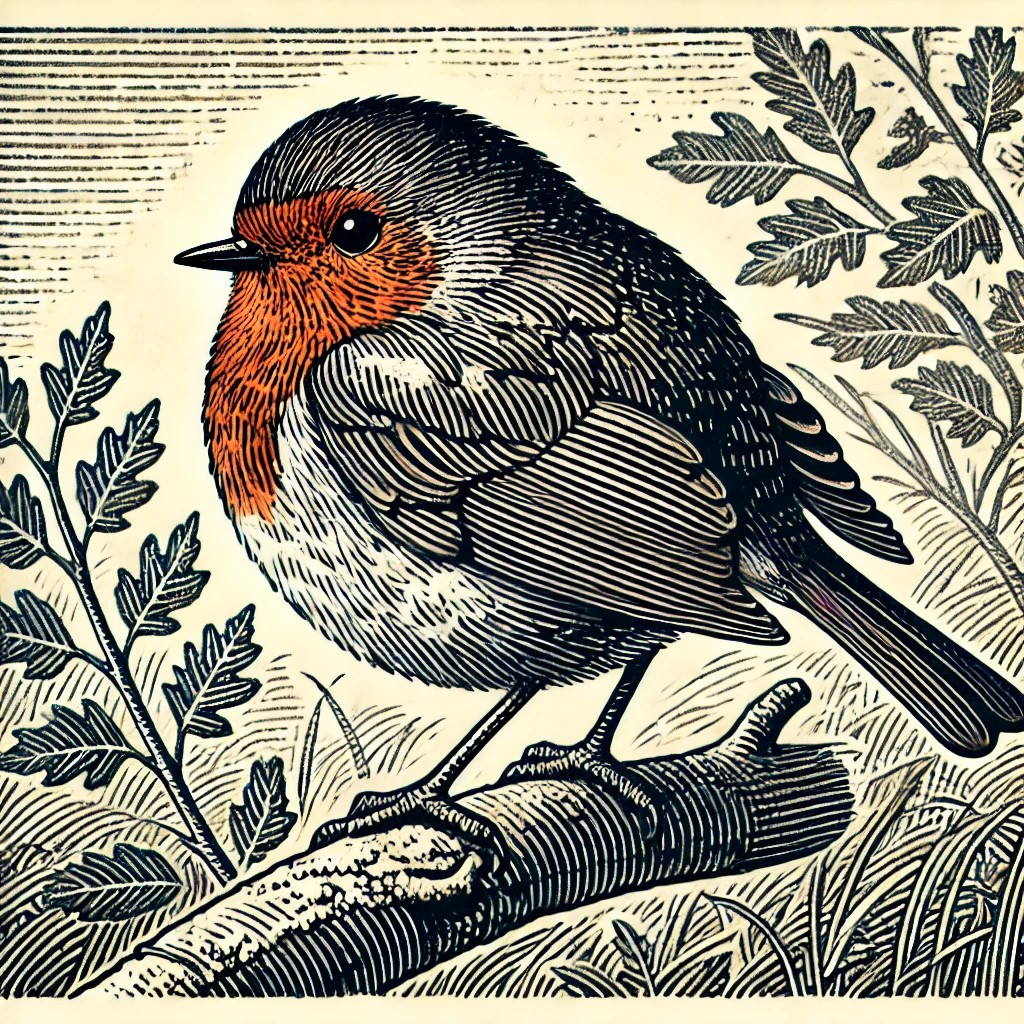
The walk began in the Forest Garden at the rear of Stirchley Library …
